When White Flint Mall Was Everything
It had a mirrored fountain, a mall discotheque, and the only I. Magnin on the East Coast. White Flint Mall opened in 1977 in Rockville, Maryland, and for a while, it felt like the retail version of ambition.
Anchored by Lord & Taylor and Bloomingdale's, the place drew shoppers from across the D.C. region.
By the time Georgetown-style streets and neon food courts showed up, it had already built a name. Some still call it the last great mall of its kind.
Groundbreaking, Leasing, and Early Anchor Deals
White Flint Mall officially opened on March 2, 1977.
Lerner Enterprises and The Tower Companies developed it and occupied a 45-acre site along Rockville Pike, Montgomery County's main retail corridor.
The mall featured three levels and was anchored at launch by Lord & Taylor and Bloomingdale's.
Both stores came in as part of early leases meant to position White Flint Mall as an upscale alternative to existing malls in the Washington, D.C., metro area.
I. Magnin opened shortly afterward and was their only East Coast branch.
It occupied just the second and third floors.
In terms of design, the developers used theme areas like Via Rialto on the ground floor and Georgetown on the third.
These weren't just window dressing.
Via Rialto stretched from the center court to the main entrance and housed restaurants and shops in a layout modeled loosely after Venice.
That block later held names like Bertucci's and The Cheesecake Factory.
The third-floor Georgetown section brought in a more urban feel.
An early draw was the Intermission Nightclub and Dining Disco, opened in the 1970s.
It ran under the Restaurant Row section and became known as the country's first discotheque located inside a shopping mall.
Raleigh Haberdasher also opened a suburban branch here, targeting the affluent shoppers of nearby Bethesda and Potomac.
At a time when few malls took design risks, White Flint Mall leaned into theatrical retail.
It gave locals a new option for things to do in Rockville, Maryland, and staked a claim on the upper tier of regional shopping centers.
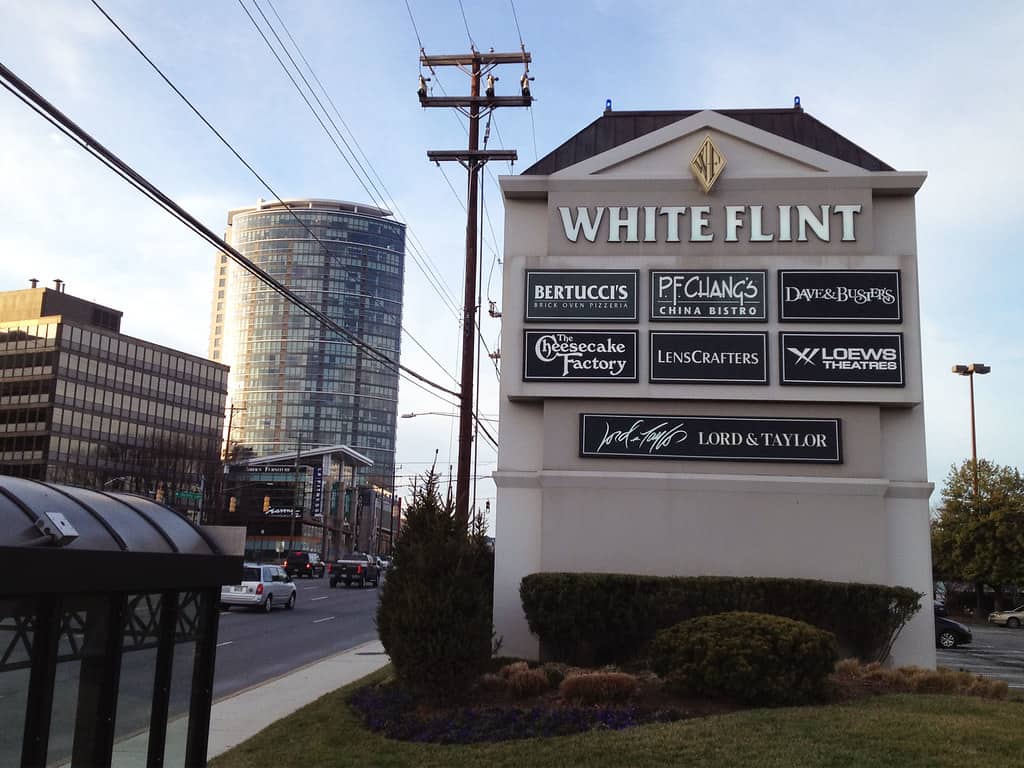
Tenant Mix, Branding Moves, and Traffic Peaks
By the early 1990s, White Flint Mall had settled into its stride.
The original anchors were still drawing steady foot traffic, and smaller tenants kept the floors active.
Borders moved in during 1993, taking over the space vacated by I. Magnin the year before.
That marked a shift, bringing in a national bookseller with a café setup, which felt like a play for the newer, post-boom consumer base.
Dave & Buster's came in 1996, replacing the Restaurant Row section that once housed Intermission Nightclub.
The Eatery, White Flint's food court, underwent cosmetic changes in the 1980s.
The earlier earth-toned palette was swapped out for bright neon.
It was an attempt to keep pace with regional competitors like Tysons Corner and Montgomery Mall.
National chains like Banana Republic and H&M arrived in the 2000s.
White Flint Mall tried to build loyalty through novelty.
It was one of the first malls to offer its credit card to regular shoppers.
For the 25th anniversary in 2002, they released "White Flint-opoly," a customized Monopoly board that rebranded store names and mall landmarks as game pieces.
Meanwhile, water features in the main court - especially the one under the mirrored escalators - became a visual marker.
It wasn't without drawbacks.
The low height of the main fountain made it easy for children to fall in, and it was eventually removed after I. Magnin closed.
Metro access helped. Since 1984, the Red Line's White Flint station had delivered a steady flow of foot traffic.
That station was renamed North Bethesda in 2022, long after the mall had vanished, but its presence was part of what kept White Flint Mall commercially viable in the '90s.
Lease Losses, Legal Action, and Exit Strategies
Between 2011 and 2015, White Flint Mall moved from struggling to shuttered.
Lerner Enterprises announced redevelopment plans in November 2011.
The vision called for tearing down the existing structure and replacing it with a mixed-use site featuring office buildings, 2,500 apartment units, and new retail.
Macy's Inc. announced in early January 2012 that Bloomingdale's would close in March.
The store shut down on March 14, and demolition of its building followed in 2013.
Other tenants followed suit. The Cheesecake Factory left in December 2013 after announcing a move to Westfield Montgomery.
Loews Cinemas shut down on January 20, 2014. Dave & Buster's was evicted in August that same year.
P. F. Chang's closed on January 4, 2015 - the same day the mall itself shut down for good.
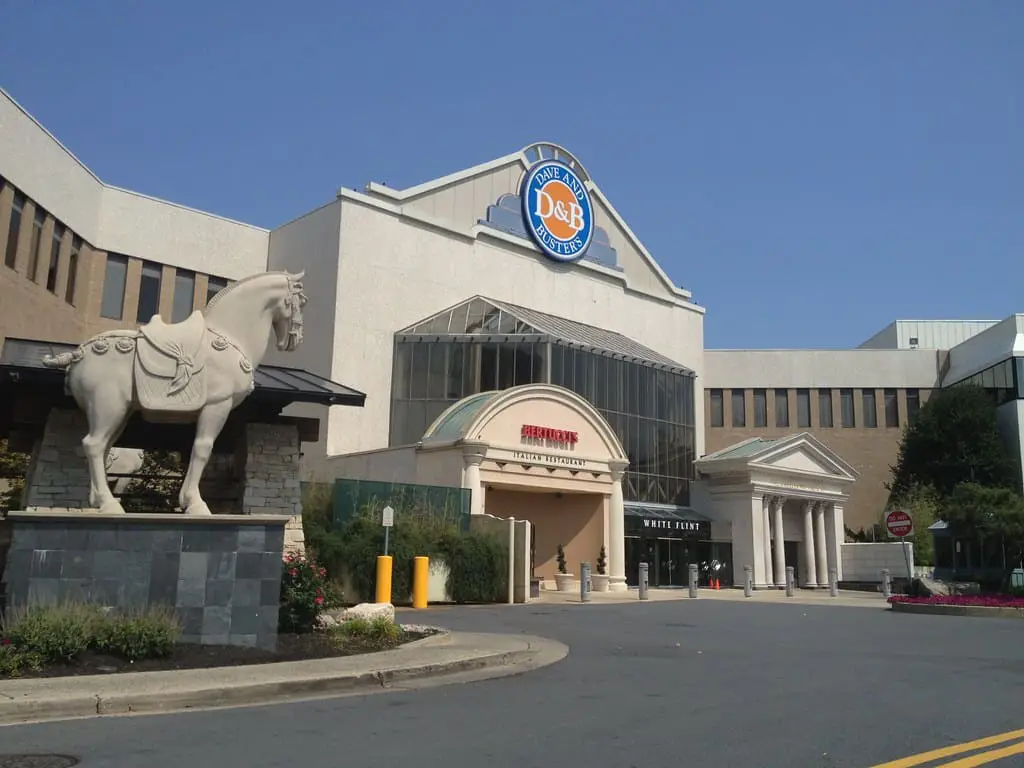
Demolition Phases, Holdouts, and Courtroom Fallout
White Flint Mall didn't come down in a single sweep.
Demolition started on July 7, 2015, with the southeastern parking garage near the site once held by Bloomingdale's.
That part had already been vacant since the department store's closure and teardown in 2013.
Over the next six months, crews took down the rest of the structure, finishing in January 2016.
The only piece left standing was the Lord & Taylor store and its adjoining garage. That wasn't an oversight.
A binding contract from 1975 required the mall to operate as a first-class retail center through 2042, which meant any redevelopment needed to keep Lord & Taylor's business conditions intact.
When Lerner Enterprises went forward with demolition plans, Lord & Taylor filed suit.
The case reached trial in July 2015, and on August 14, a Montgomery County jury awarded the retailer $31 million.
They calculated that amount based on lost revenue and the projected cost of rebuilding the store elsewhere.
Lerner appealed the ruling. However, in 2016, the Fourth Circuit Court of Appeals upheld the decision.
The court pointed to a lack of clarity around the redevelopment timeline, layout, and leasing strategy.
According to court records, White Flint's owners had failed to demonstrate how the future site would sustain Lord & Taylor's location.
The mall's shift from an enclosed center to a mixed-use design had left the anchor without clear traffic or support.
Still, the store stayed open. It operated alone on the empty site for five more years.
In August 2020, Lord & Taylor announced a plan to shut down all 38 of its remaining locations.
The Rockville branch closed on December 28. Its building remained untouched for nearly three years.
By fall 2023, that last piece of the mall was gone.
Redevelopment, Infrastructure Spend, and Site Marketability
Lerner Enterprises had laid out a master plan back in 2011: 1,000,000 square feet for retail and restaurants, four office buildings, 12 residential buildings with 2,500 apartment units, and a 300-room hotel.
They projected a 25-year buildout.
However, with the legal fight over Lord & Taylor stretching past 2015, no vertical construction followed the demolition.
The site sat empty while competing projects - like Federal Realty's Pike & Rose - moved forward just down the street.
The land had briefly entered the national spotlight.
When Amazon announced its second headquarters search, the former White Flint Mall site was floated as one of several options from the D.C. metro area.
It lost out in the final decision, which awarded HQ2 to New York City and Crystal City, Virginia.
That removed any pressure to adapt the development plan to meet tech-sector specs.
In the meantime, Montgomery County focused on infrastructure.
The White Flint West Workaround, a street grid and traffic improvement project designed to replace the mall's old loop system, received $74 million in public funding.
Construction concluded in March 2023.
It created new roadways through the parcel and connected Rockville Pike to the surrounding neighborhood, aimed at future walkability and increased parcel value.
As of late 2023, the entire mall site had been cleared. No structures remained.
The future of the land still traces back to that original 2011 vision - retail, housing, and office space spread across a multi-decade construction timeline.

🍀



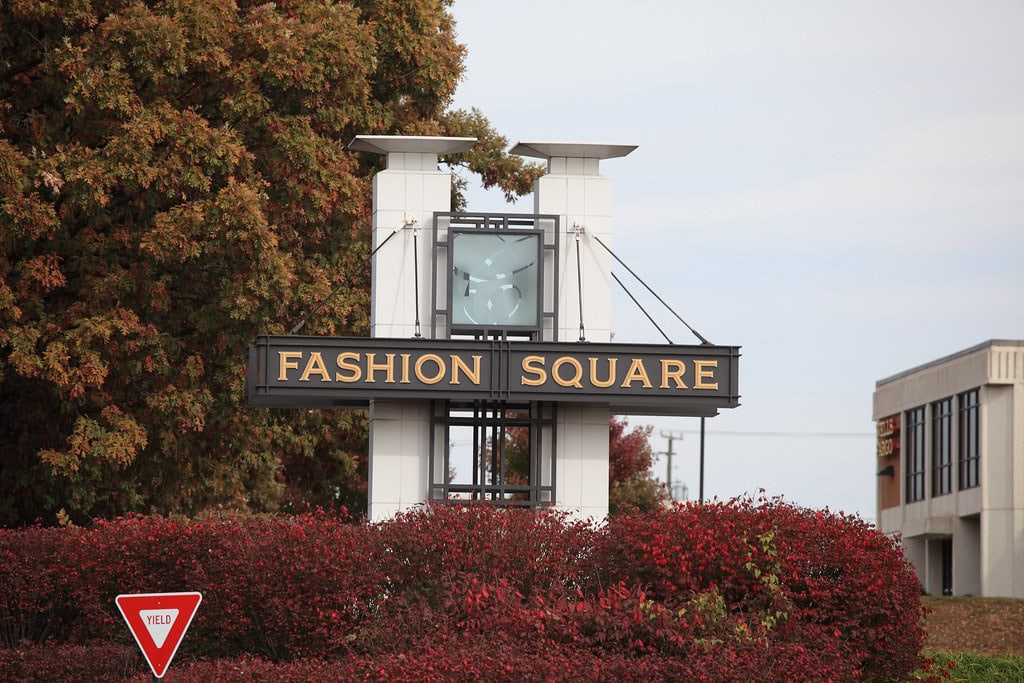
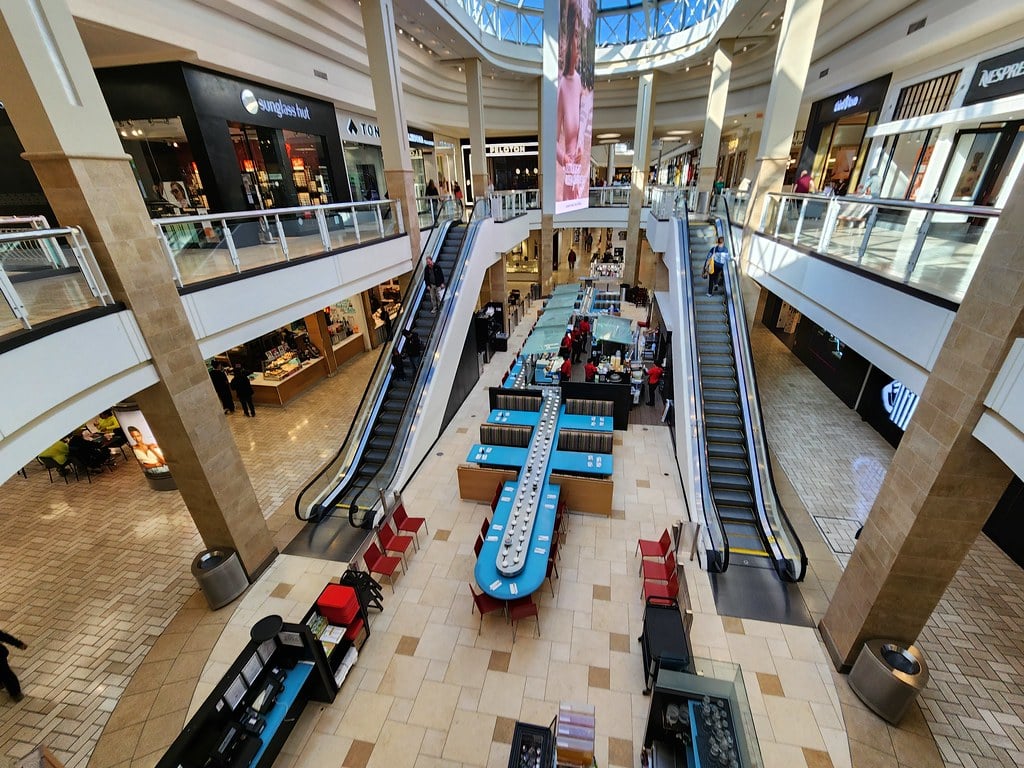
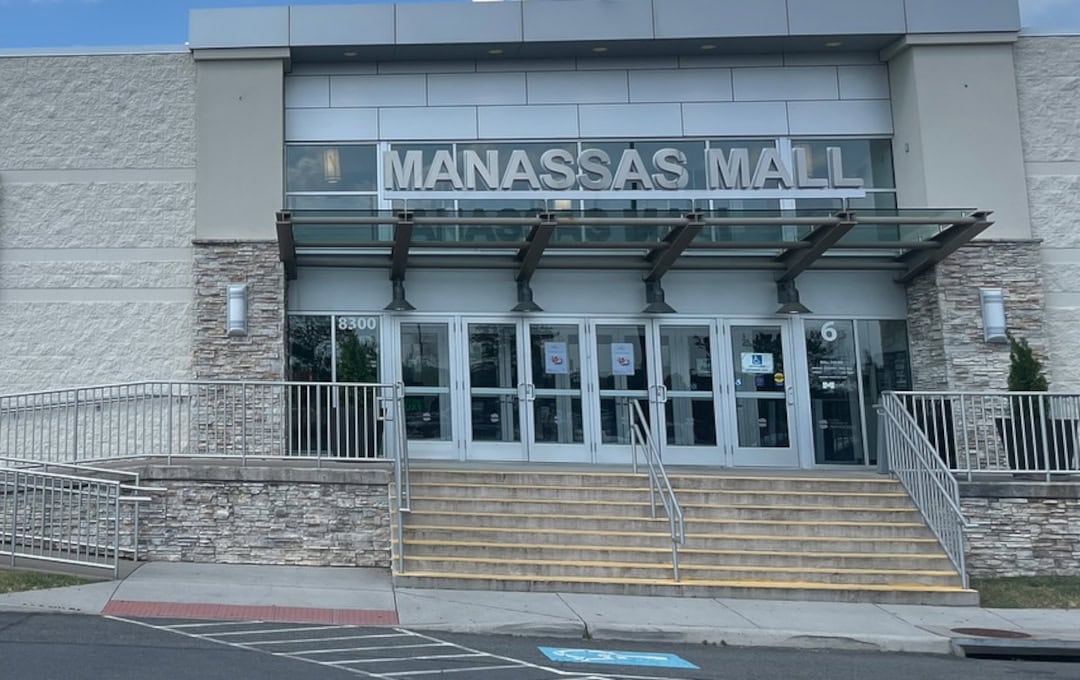

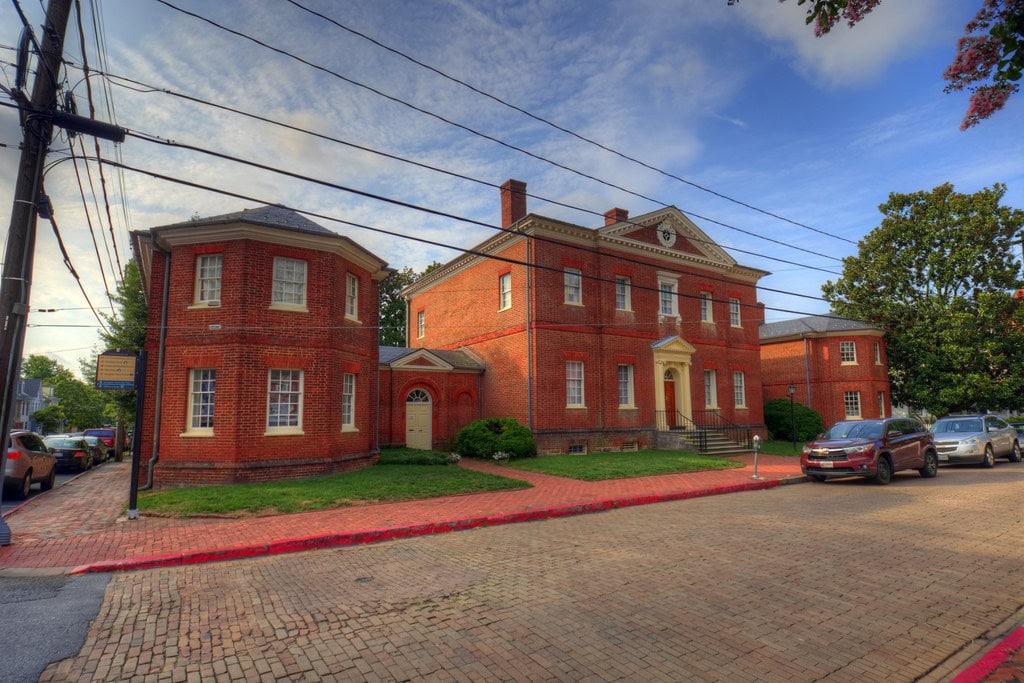
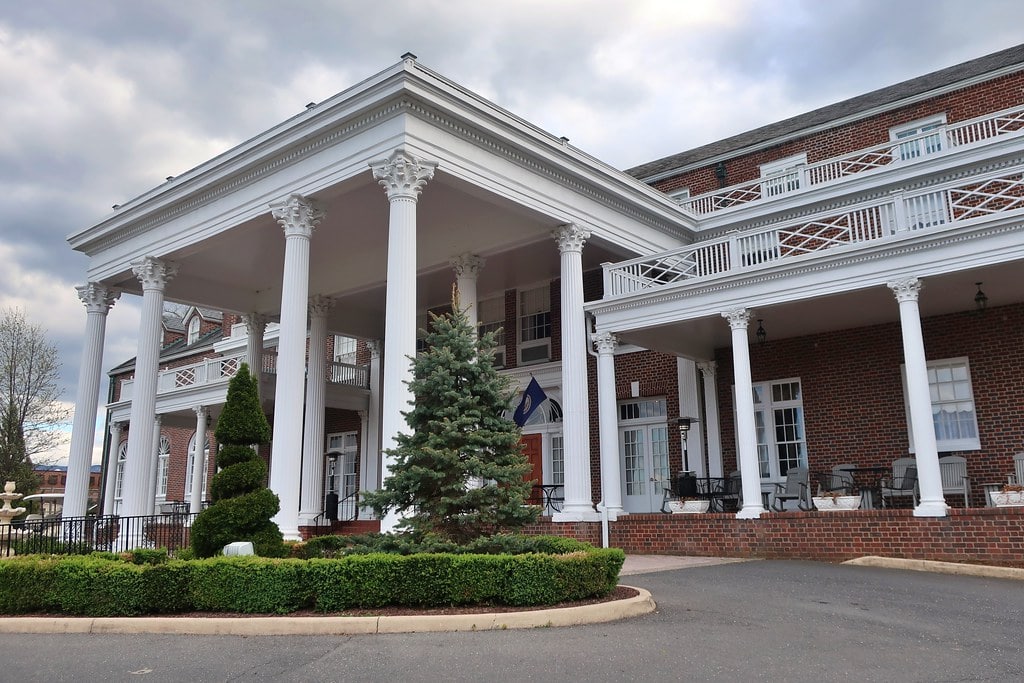
I stumbled upon this blog and found your information on White Flint Mall very interesting. The mall didn’t even last four decades! Just wow.
As a longtime resident of Maryland, I remember shopping there, especially in 1980s. I recall when the eatery was much darker with the brown colors - and I would get either cheap Chinese food or greasy pizza there. Also I remember a cool food option in the eatery being called ‘House of Dill Repute,’ which featured snack foods, and of course, pickles.
It really is heartbreaking to see what’s happened to these shopping malls; there are so few left, and I recall when WF was the crème de la crème. My mom and I had lunch at the center atrium restaurant a few times. I wish I could remember its name, as it was a super nice alternative to the WF food court/eatery.
Anyway, thank you for a thoughtful piece on this. I hope whatever happens with Lerner development and the large project/endeavor that it will have some focus or direction soon. The last thing that Rockville needs is to have a wasteland sitting in the middle of a suburban business/retail mecca.
I really enjoyed reading your memories of White Flint Mall! Your description of the mall’s heyday is so nostalgic—it’s a reminder of how special places like White Flint used to be. Thank you for such a thoughtful comment.
Does anyone remember “The Perfect Cup” at White Flint? It was way before its time! One side of the store served various coffee, tea and pastries. The retail side sold bulk coffee and teas, tea pots, fancy cups and other accoutrements. It put Starbucks to shame! There was nothing like it around before or after! A real gem!
Thanks for recalling the details so clearly. It was rare then to find a place that combined café culture with real retail variety.
I also remember White Flint Mall with some affection, especially the month between Thanksgiving and Christmas. There were lavish mall-wide holiday decorations and many free performances by community groups and musicians, delighting children and adults alike.
You've described what many people try to sum up as "vibe" or "energy," but it's clearer when someone names the specifics: music, children, space to linger.